Whilst urbanization has brought many benefits to society, it increasingly denies people of opportunities for the mental, spiritual and physical health benefits from nature. Over the last decade, there has been an alarming global increase in diseases such as heart diseases, cancer, chronic respiratory diseases and diabetes [Note 1]. The risk of these non-communicable diseases is linked to a number of factors, including physical inactivity. Simultaneously, we are just beginning to appreciate the wealth of human health benefits that stem from experiencing nature and biodiversity [2]. A wide range of positive mental and emotional effects have been found to be associated with human exposure to nature, such as on general health, stress reduction, increased physical activity, and reduced incidence/levels of cardiovascular, intestinal, and respiratory diseases.
Nature Rx, a grassroots movement dedicated to informing people about the healing aspects of nature, created a great campaign to remind people about how enjoyable and vital nature really is. They attract attention with innovative and captivating slogans such as “nature, a non-harmful medication,” “side-effects may include spontaneous euphoria and being in a good mood for no apparent reason,” and “ask your doctor if nature is right for you.” Watch one of their videos here.
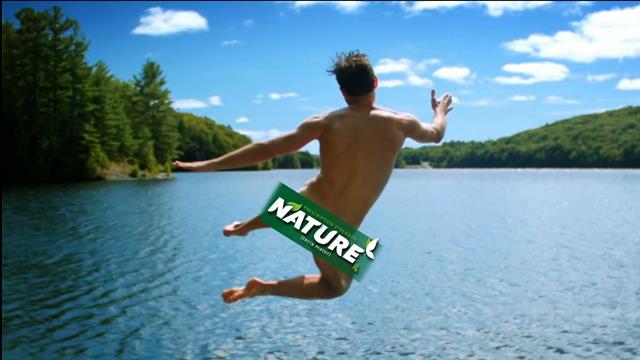
Chris Ives, a Nature of Cities author from Leuphana University in Lüneburg, recently shared some interesting insights on how reconnecting people with nature can help transform society towards sustainability and emphasizing that cities are key places for reconnecting people with nature.
When ecosystems are degraded and disturbed, biodiversity is often lost, as is human health. Protected areas and natural areas within and around cities restore and safeguard nature and are critical for healthy and sustainable communities. In an urbanizing world with a growing population, protected areas are natural solutions for securing our health and well-being, while providing many other benefits such as adapting to the impact of climate change and ensure clean drinking water supply.
Parks, people and health
Representatives of Parks Agencies, cities, governments, civil society groups and international organizations, such as ICLEI, the World Health Organisation, Conservation International and IUCN, were hosted by the Salzburg Global Seminar at Schloss Leopoldskron in Salzburg in November 2015 for “The Parks for the Planet Forum.”
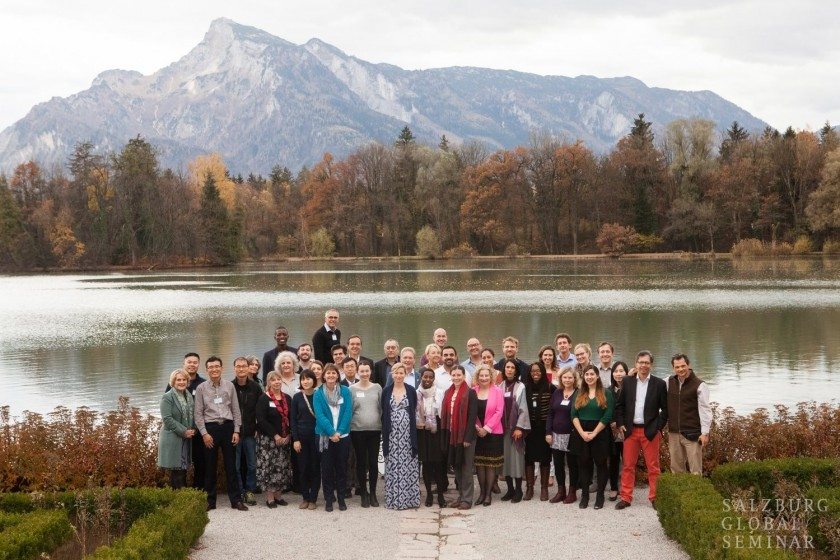
This initiative builds on “The Promise of Sydney,” the key outcome of the IUCN World Parks Congress 2014, which presents an ambitious agenda to safeguard the planet’s natural assets, ranging from halting rainforest loss in the Asia-Pacific and tripling ocean protection off Africa’s coasts to a business commitment to plant 1.3 billion trees along the historic Silk Road. “The Promise” includes pledges from governments, international organizations, the private sector, Indigenous leaders, community groups and individuals. It highlights the need to invigorate global efforts to protect natural areas, including scaling up the protection of landscapes and oceans. It includes commitments to boost investment in nature’s solutions to halt biodiversity loss, tackle Climate Change, reduce the risk and impact of disasters, improve food and water security and promote human health. It also aims to inspire people around the globe, across generations and cultures, to experience the wonder of nature through protected areas.
Protected areas are by far the best investment the world can make to address some of today’s biggest development challenges and nature—and nature connectedness—can and must be deployed to tackle impacts on human health and well-being linked to rapid urbanisation.
The discussion during the Parks for the Planet Forum in Salzburg revolved around urban and youth engagement in building appreciation for an access to nature; strategic coalitions for health, cities and nature; the business case for urban transformation in support of health and well-being; and communication with the purpose of improving the understanding for the value of nature for human well-being. The rich discussions during the Forum, show that while the value of nature for health and wellbeing remains highly invisible, there are opportunities and developments that show how we can bring people closer to nature, even in our rapidly urbanising world, and what we can do to spread great ideas.
Indigenous communities make no distinction between culture and nature—they are one. Today, however, we see a growing disconnection from the natural world, with children spending more and more time indoors and names of particular plant species disappearing from our dictionary. Eleven- to 15-year-olds in Britain now spend, on average, half their waking day in front of a screen [3]. According to George Monbiot, losing their contact with nature, the next generation will not fight for it. In Salzburg, Daniel Raven Ellison presented his visionary and hope-giving idea for making London the first National Park City, described as: “A city where people and nature are better connected. A city that is rich with wildlife and every child benefits from exploring, playing and learning outdoors. A city where we all enjoy high-quality green spaces, the air is clean to breathe, it’s a pleasure to swim in its rivers and green homes are affordable. Together we can make London a greener, healthier and fairer place to live.”
Gil Penalosa, Executive Director of 8-80 Cities, explained how Mexico City has benefited from unconventional partnerships between public and private sector partners to expand the resource base for improving the value its largest natural area in the city, Chapultepec park, for citizens and visitors. A group of citizens together with City officials and Park Administrators came up with a Master Plan and set of actions to restore the park. Half of the financing for restoration has been collected from donations, including one million donors at metro stations and supermarkets, and private donations by corporations and important donors. The Chapultepec park is a great example that shows how citizens care for their city and in particular their green spaces and how the impossible can be made possible.
As part of the Promise of Sydney, the IUCN World Commission on Protected Areas has established a joint task force with the IUCN Commission on Education and Communication on Inspiring a New Generation. This will have a strong emphasis on reaching out to young people but also urban communities, to strengthen the linkages between people and nature as young people represent more than half of the world’s population, making this a significant group as a living and breathing force of great potential whose voices must be heard.
How nature can improve physical and mental health
To investigate the impact of urban nature on childhood asthma in New York City, researchers at Columbia University conducted a study on the correlation between the number of neighbourhood street trees and incidence of the disease (Lovasi et al, 2008)[4]. The study indicates that adding an additional 343 trees per square kilometer decreased the asthma rate by as much as 24-29 percent among children aged 4 and 5.
Public health and the environment are intrinsically linked. Environmental degradation has negative impacts on human health, whilst the conservation of nature and green spaces can deliver multiple health benefits. A study for the European Commission, led by IEEP – Institute for European Environmental Policy, explores these links and how they could be integrated into public health strategies. Marianne Kettunen, Principal Policy Analyst of IEEP, explained at the Parks for the Planet Forum that green areas, rich in biodiversity, in the direct living environment can decrease the incidence and prevalence of allergies and higher levels of exposure to green spaces are associated with improved cognitive development. She emphasized the need to combine evidence with demand and start offering solutions and rightfully stated that “A bit of biodiversity a day keeps the doctor away!”
The European Union Health Strategy 2008-2013 acknowledges the need for action to tackle climate impacts on health. The impact of heat waves is particularly strong in cities and towns. The so-called ‘urban heat island effect’ which describes the increased temperature of the urban atmosphere compared to its rural surroundings, can cause a growing risk of death from heat stress, in particular for elderly people in our ageing urban societies. The URBES – Urban Biodiversity and Ecosystem Services project has analysed the climate regulation function of green infrastructure in four case study cities, Berlin, Helsinki, Rotterdam and Stockholm (Larondelle and Haase, 2013)[5]. The results of this study confirm that green infrastructure can significantly reduce the urban heat island effect.
Due to the growing number of people in Europe and the U.S. dementia is one of the most critical health challenges. The Nature Assisted Health Foundation, a Swedish/Dutch initiative which translates scientific research on nature and health linkages into concepts for improved health and wellbeing promotes the need for stronger evidence of the benefits of nature to tackle the problem of dementia. Experiments with dementia gardens in Sweden and the Netherlands have demonstrated improvements in quality of life and a reduced need for medication resulting in a substantial reduction in health-care costs.
Partnerships for action
There is a clear scientific understanding of the human need for, and connection to, nature as well as its physical, mental, social and spiritual health and well-being benefits, which the World Health Organisation underlines. However, greater global action is needed to strengthen the evidence base on the connection between nature and human health and well-being and incorporate it into policy and practice, and in particular to engage the health sector, as nature can contribute to reduce health costs substantially. To realise this opportunity, the protected areas, health and business community need to collaborate and work closely together with researchers, governments and NGOs to create a new approach that ensures that nature can help people thrive.
Most of Bogota’s water originates high above the city in Chingaza National Park. The Agua Somos mechanism is a private-public partnership that finances the conservation of moors, forests and rivers that generate water resources in the Bogota region, ensuring not only water supply to more than 10 million people but also the wellbeing of the communities located in the area. This allows users of the water resource to compensate the efforts of both private owners and protected areas to preserve vegetable plantations, forests, and soil that protect watersheds that supply the city, ensuring its quality, quantity and regulation. Owners and protected areas do not have adequate resources to preserve forests and moors that produce the water for Bogota, but they do have restrictions on land use. The Agua Somos mechanism is an interesting alternative as it can provide the necessary funds in order to develop the conservation activities required.
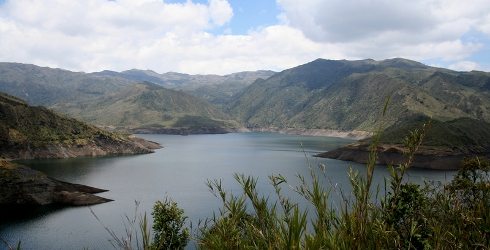
To improve health and well being, we need to strengthen the evidence to show how nature affects health and promote preventative health contribution made by protected areas and urban green spaces. This entails mapping, assessment and quantification of the qualities and functions of urban and peri-urban parks and green spaces for specific cities and improved understanding of the connection between urban green elements, biodiversity, and human health and wellbeing.
Healthy Parks Healthy People was created by the Australian park agency Parks Victoria in 2000—it has been highlighted before on The Nature of Cities by Kathryn Campbell, the Manager of the initiative—and explores the links between nature and human health. They have published a report this year that reviews the post-2008 literature that examines the health benefits of parks and natural spaces. The wealth of global evidence connecting parks and their value for improving human health highlights the need to promote and invest in parks to ensure the benefits are realised across all communities.
The potential for improving health through use of parks can be enhanced in many ways. This includes park managers, researchers and policy makers promoting the health benefits of nature. The challenge is how to combine a compact city with the need for green space near where people live and the connection between nature in cities and in the surrounding areas is essential for securing the many ecosystem services that benefit urban citizens and means involvement of all relevant planning as well as other stakeholders active at the larger landscape scale.
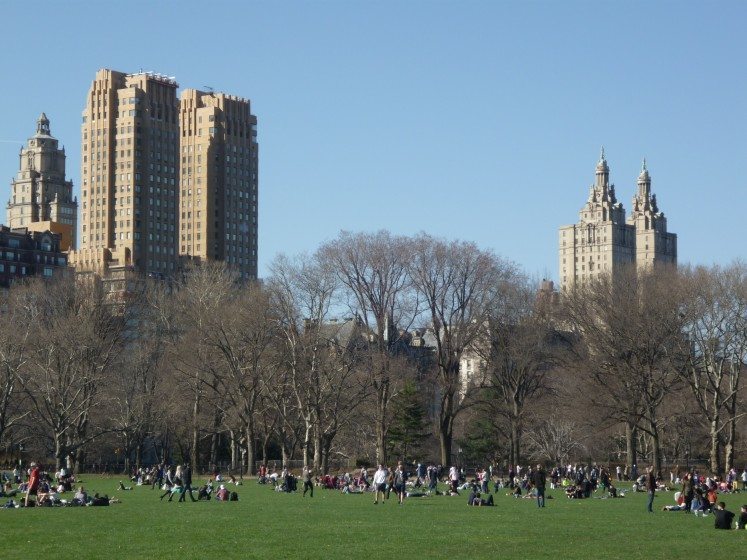
Taking action starts with awareness of the values of nature. A contribution to the World Forum on Natural Capital from the Town of Gibsons, a coastal community north of Vancouver, showed how this municipality not only identified the value of its natural capital, but also made them part of urban decision making. They are pioneering a so called “eco-asset strategy” as an effective financial and municipal management approach that focuses on identifying existing natural assets such as green space, forests, topsoil, aquifers and creeks that provide municipal services such as storm water management; measuring the value of the municipal services provided by these assets; and, making this information operational by integrating it into municipal asset management. The innovation in this strategy is that it helps to explain the value of natural assets in terms of financial and management strategies.
We all know that connecting with and spending time in nature is beneficial for our health. To demonstrate how nature can be used to improve physical and mental health for urban citizens, it is crucial for the nature conservation community to strengthen awareness and knowledge of the values of biodiversity and ecosystem services and to develop a strong business case to improve the connection with non-conventional partners, policy makers and practitioners, the public health sector and urban planners to create opportunities for deploying nature-based solutions to health and well-being challenges.
The partners who participated in the first Parks for the Planet Forum made a joint commitment to find ways to identify and promote mutual co-benefits of nature, health, and a new urban generation. Cities will be usedities as the starting point for the conversation with communities that will provide support to optimize the value of the mutual benefits of nature and human health wellbeing. Turning these ideas into action, we hope to work together closely with the partners The Nature of Cities network to give nature the place in society as miracle medicine it deserves.
Chantal van Ham
Brussels
Notes:
[1] World Health Organisation Factsheet Noncommunicable diseases, January 2015 http://www.who.int/mediacentre/factsheets/fs355/en/ [2] Paul A. Sandifer,,Ariana E. Sutton-Grier, Bethney P. (2015)Ward, Exploring connections among nature, biodiversity, ecosystem services, and human health and well-being: Opportunities to enhance health and biodiversity conservation, Ecosystem Services, http://www.sciencedirect.com/science/article/pii/S2212041614001648 [3] George Monbiot, If children lose contact with nature they won’t fight for it, The Guardian, 19 November 2015 http://www.theguardian.com/commentisfree/2012/nov/19/children-lose-contact-with-nature?CMP=share_btn_fb [4] Gina Schellenbaum Lovasi, Kathryn M Neckerman, James W Quinn, Matthew S Perzanowski, Andrew Rundle (2008), Children living in areas with more street trees have lower asthma prevalence, Journal of Epidemiology and Community Health, http://jech.bmj.com/content/early/2008/05/01/jech.2007.071894.abstract [5] Larondelle, N., & Haase, D. (2013). Urban ecosystem services assessment along a rural – urban gradient : A cross-analysis of European cities. Ecological Indicators, 29, 179–190.







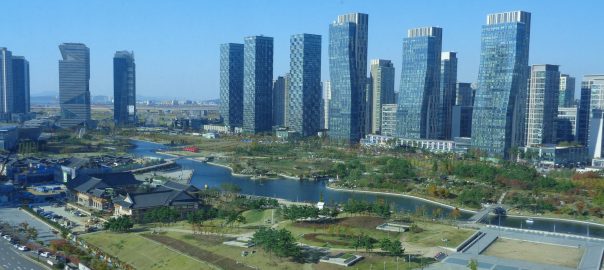

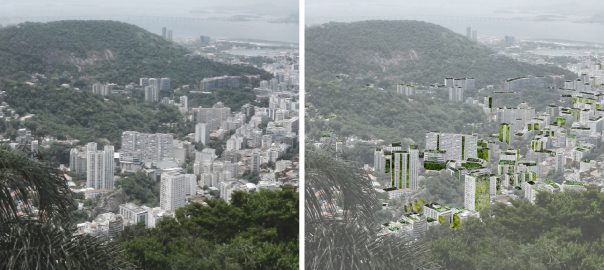
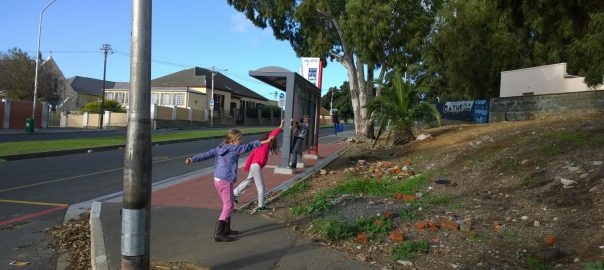
Add a Comment
Join our conversation